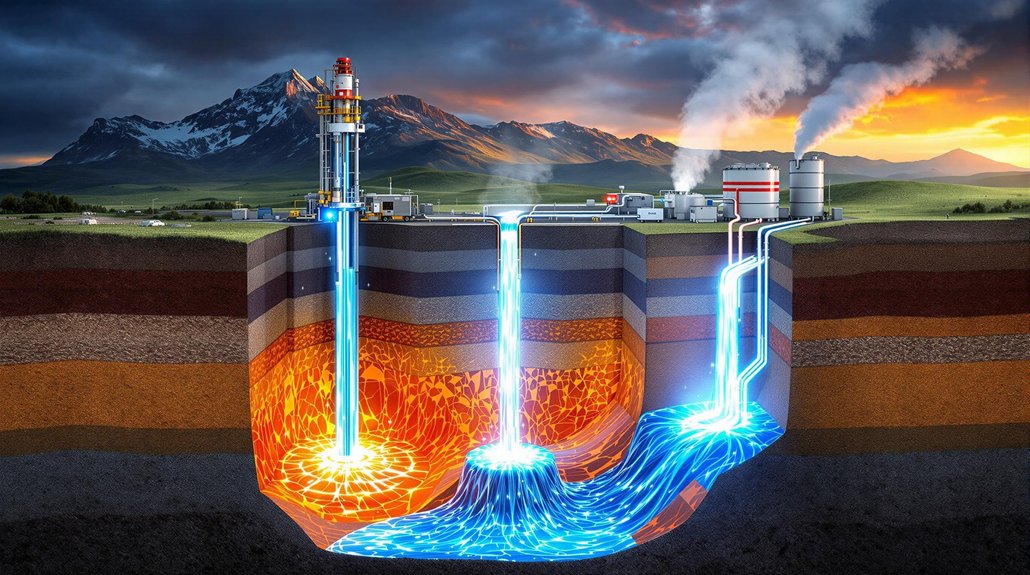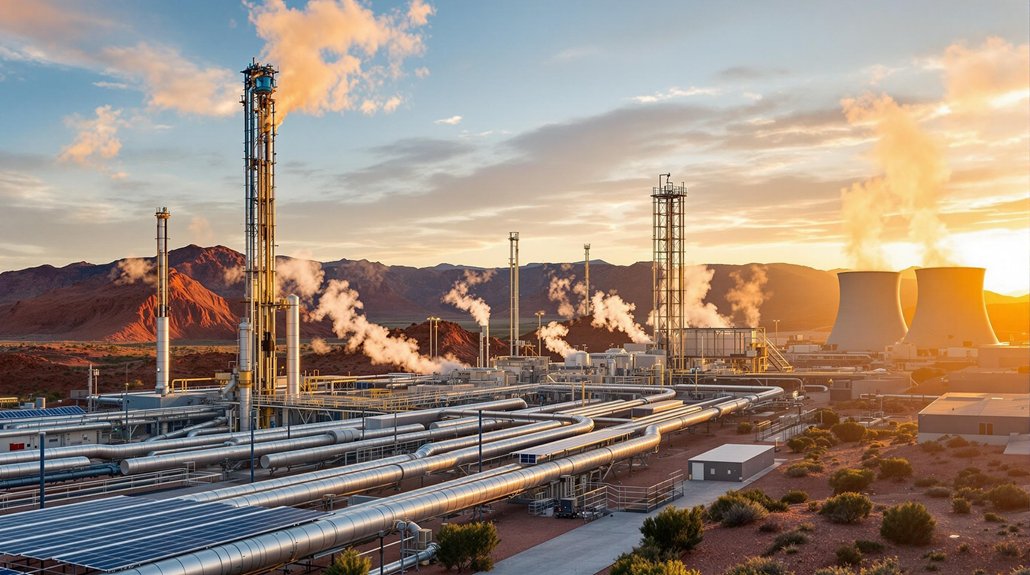Supercritical geothermal energy isn’t your grandma’s power source. It taps into fluid heated beyond 374°C under extreme pressure, delivering up to 10 times more juice than regular geothermal wells. Unlike fickle solar panels, this beast runs 24/7 with a 96% capacity factor. Yeah, drilling 4-6 kilometers deep is tough—equipment melts, basically. But with 5-50 megawatts per well and minimal emissions, the technical headaches might be worth conquering.
While renewable energy typically conjures images of windmills and solar panels, a revolutionary power source lurks deep beneath our feet. Supercritical geothermal energy isn’t just hot water or steam—it’s fluid heated beyond 374°C and pressurized above 221 bar, creating something that’s neither liquid nor gas but packs the punch of both. Found naturally near magma bodies or deep in Earth’s crust, this stuff means business.
Traditional geothermal? Cute. Supercritical geothermal wells deliver up to 10 times more power. Each. That’s game-changing math right there. We’re talking 5-50 megawatts per well, potentially transforming our entire energy sector. And unlike those temperamental solar panels that quit at sunset, this provides constant, reliable baseload power. With its impressive 96% capacity factor, this energy source offers remarkable consistency compared to other renewables.
Getting to it isn’t exactly a walk in the park. Engineers must drill 4-6 kilometers down, battling temperatures and pressures that destroy equipment. The brittle-ductile changeover zone? It’s like drilling through hot taffy that occasionally shatters. The development of corrosion-resistant alloys has become crucial for equipment that can withstand these extreme conditions. These projects require specialized equipment for drilling through extreme conditions where conventional tools would quickly fail.
Expensive? You bet. Worth it? Probably.
Scientists aren’t just dreaming—they’re doing. Iceland’s Deep Drilling Project, Japan’s Beyond Brittle Project, Italy’s DESCRAMBLE project—the race is on. These aren’t just experiments; they’re the opening salvos in an energy revolution.
Environmentally, it’s a mixed bag. Minimal greenhouse emissions and smaller surface footprints than conventional geothermal. Great! Potential for induced earthquakes. Not so great! But compared to coal plants belching carbon or nuclear facilities stockpiling waste? It’s practically angelic.
Right now, supercritical geothermal remains experimental. The technology needs work. Drilling techniques need refinement. Materials that won’t dissolve in super-heated, corrosive fluid need inventing.
But the potential is staggering—near-limitless, carbon-free energy that works everywhere, not just volcanic regions.
The energy world’s best-kept secret won’t stay hidden much longer. When the technical hurdles fall—and they will—supercritical geothermal might just power our future. No sunshine required.








